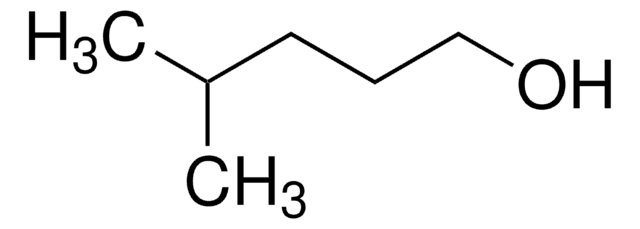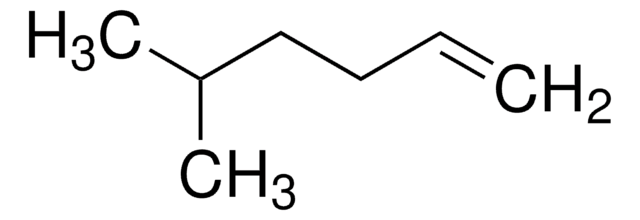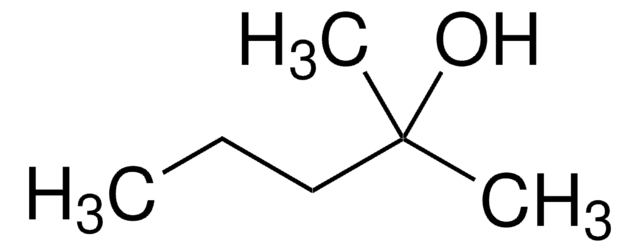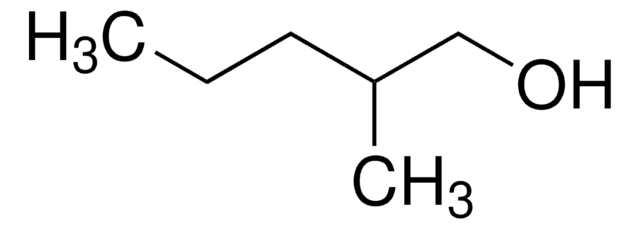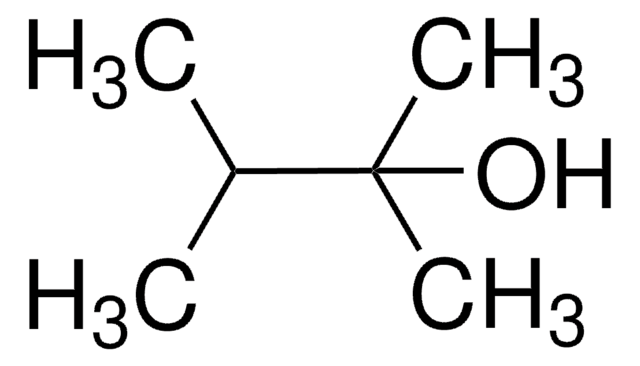493953
5-Methyl-1-hexanol
97%
Synonyme(s) :
5-Methylhexanol
Se connecterpour consulter vos tarifs contractuels et ceux de votre entreprise/organisme
About This Item
Formule linéaire :
(CH3)2CH(CH2)4OH
Numéro CAS:
Poids moléculaire :
116.20
Numéro CE :
Numéro MDL:
Code UNSPSC :
12352100
ID de substance PubChem :
Nomenclature NACRES :
NA.22
Produits recommandés
Niveau de qualité
Pureté
97%
Indice de réfraction
n20/D 1.422 (lit.)
Point d'ébullition
167-168 °C (lit.)
Densité
0.823 g/mL at 25 °C (lit.)
Groupe fonctionnel
hydroxyl
Chaîne SMILES
CC(C)CCCCO
InChI
1S/C7H16O/c1-7(2)5-3-4-6-8/h7-8H,3-6H2,1-2H3
Clé InChI
ZVHAANQOQZVVFD-UHFFFAOYSA-N
Catégories apparentées
Description générale
5-Methyl-1-hexanol, an aliphatic alcohol, can be prepared by the reduction of 5-methylhexanoic acid. It is predicted to have a fruity odor based on fuzzy partition and self organising maps (SOM) analysis data.
5-Methyl-1-hexanol is a volatile organic compound found in:
5-Methyl-1-hexanol is a volatile organic compound found in:
- Alstonia boonei leaves
- ‘Hayward′ and ‘Hort16A′ kiwifruit
- Tuber melanosporum fruiting body
Mention d'avertissement
Warning
Mentions de danger
Conseils de prudence
Classification des risques
Acute Tox. 4 Oral - Flam. Liq. 3 - Skin Irrit. 2
Code de la classe de stockage
3 - Flammable liquids
Classe de danger pour l'eau (WGK)
WGK 3
Point d'éclair (°F)
86.0 °F
Point d'éclair (°C)
30 °C
Faites votre choix parmi les versions les plus récentes :
Déjà en possession de ce produit ?
Retrouvez la documentation relative aux produits que vous avez récemment achetés dans la Bibliothèque de documents.
Les clients ont également consulté
Coralia V Garcia et al.
Food chemistry, 137(1-4), 45-54 (2012-12-04)
Bound volatiles are recognised as a potential source of aroma compounds in fruits. In this study, the bound volatiles of Actinidia deliciosa 'Hayward' and A. chinensis 'Hort16A' were studied at three different ripening stages. The bound volatile content tended to
Prediction of odours of aliphatic alcohols and carbonylated compounds using fuzzy partition and self organising maps (SOM).
Audouze K, et al.
Analusis, 28(7), 625-632 (2000)
Nicolas Durand et al.
PloS one, 6(12), e29147-e29147 (2012-01-05)
Odorant-Degrading Enzymes (ODEs) are supposed to be involved in the signal inactivation step within the olfactory sensilla of insects by quickly removing odorant molecules from the vicinity of the olfactory receptors. Only three ODEs have been both identified at the
Nicolas Durand et al.
PloS one, 5(11), e15026-e15026 (2010-12-03)
Carboxyl/cholinesterases (CCEs) are highly diversified in insects. These enzymes have a broad range of proposed functions, in neuro/developmental processes, dietary detoxification, insecticide resistance or hormone/pheromone degradation. As few functional data are available on purified or recombinant CCEs, the physiological role
GC-MS evaluation of bioactive compounds and antibacterial activity of the oil fraction from the leaves of Alstonia boonei De Wild.
Okwu DE and Ighodaro BU.
Der Pharma Chemica, 2(1), 261-262 (2010)
Notre équipe de scientifiques dispose d'une expérience dans tous les secteurs de la recherche, notamment en sciences de la vie, science des matériaux, synthèse chimique, chromatographie, analyse et dans de nombreux autres domaines..
Contacter notre Service technique